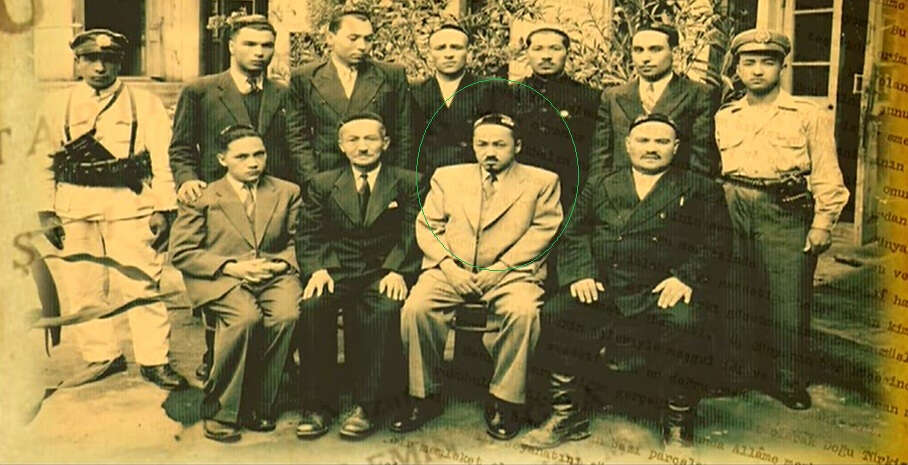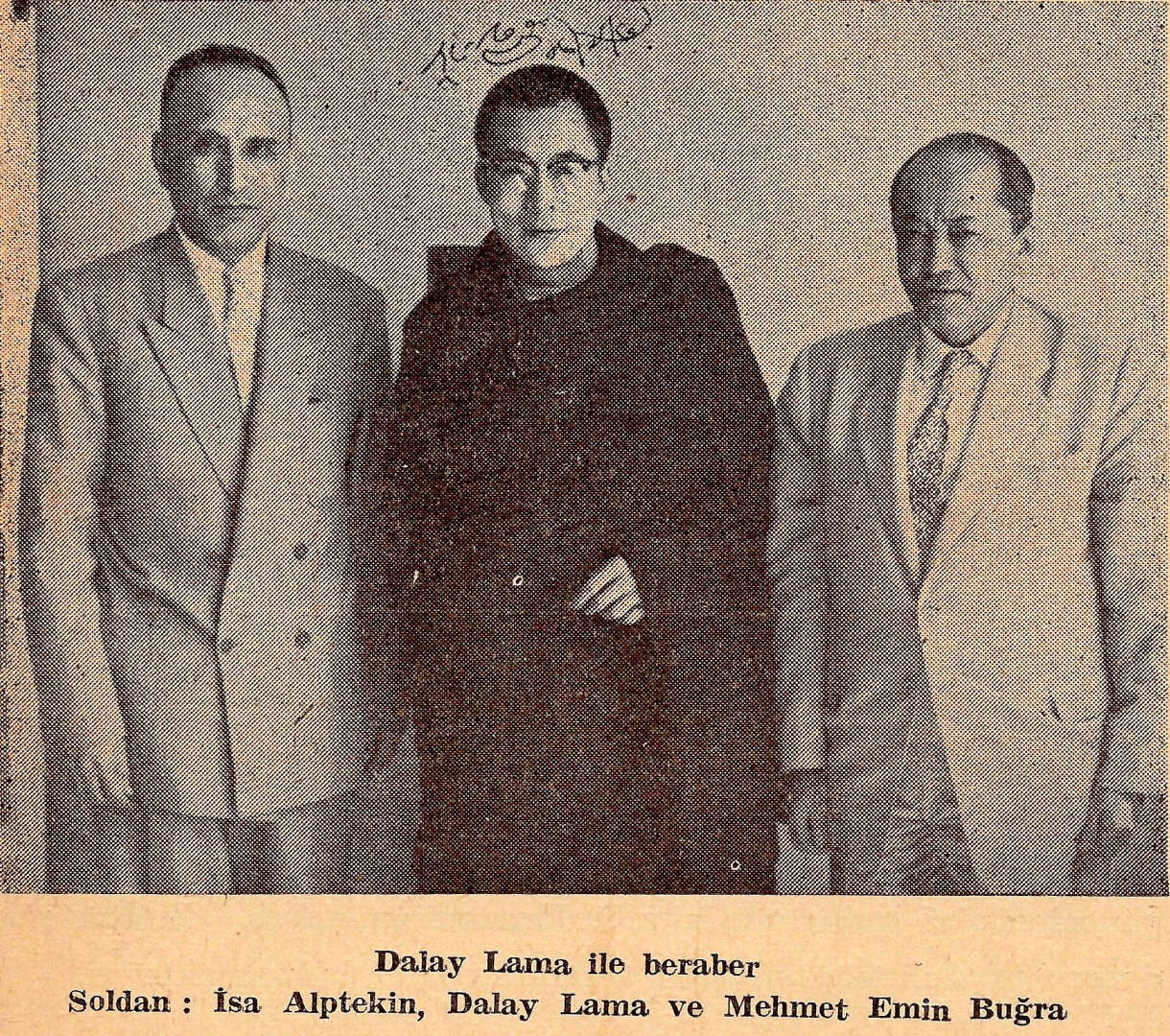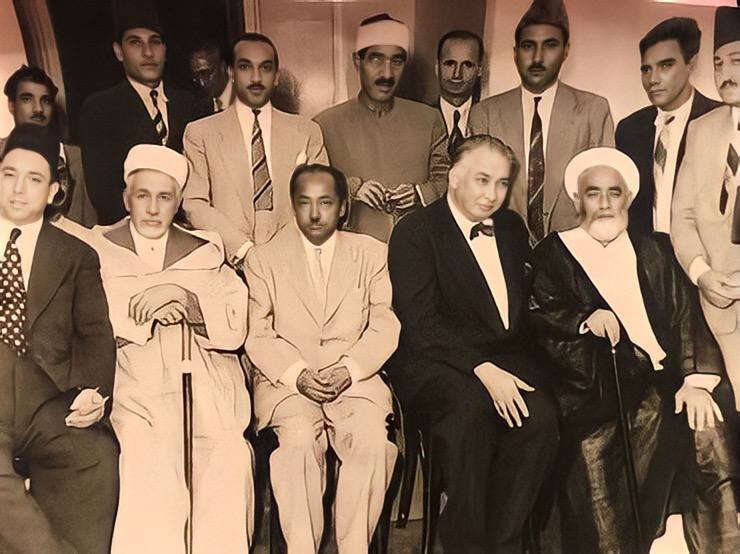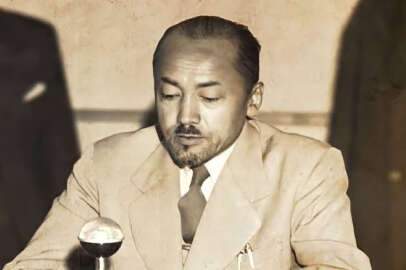Known by the title "Hazretim," the founder and commander-in-chief of the National Revolutionary Organization, and the legendary leader who made significant military and economic contributions to the East Turkestan Islamic Republic, Mehmet Emin Buğra is commemorated with respect on the 60th anniversary of his passing.
Mehmet Emin Buğra, the unforgettable leader who left his mark on the history of East Turkestan's national struggle, passed away 60 years ago. The legendary leader, who fought for the independence of East Turkestan regardless of time or place, is remembered with respect today.
WHO IS MEHMET EMİN BUĞRA?
Mehmet Emin Buğra (Hazretim) was born in 1901 into a respected family in the city of Hotan, East Turkestan. Having lost his father, Pir Abidin Hacı, one of Hotan's esteemed religious scholars, at a young age, Buğra was raised under the care and upbringing of his mother, Sekine Banu Hanım, along with his four brothers and two sisters. Buğra's mother, Sekine Banu Hanım, was the granddaughter of Abdurrahman Pasha, the founder of the Hotan Khanate which ruled the region in 1863.
After starting his primary education in Hotan at age nine, Buğra lost his mother at ten and was taken under the care of his uncle, Mehmet Niyaz Hacı. At 22, he completed his higher religious education in Arabic and Persian at the renowned madrasas in the Karakaş district of Hotan. Between 1922 and 1930, he served as a teacher of Tafsir (Qur'anic exegesis) and Hadith in Hotan and Karakaş.

NATIONAL REVOLUTIONARY ORGANIZATION FORMED AGAINST CHINA
Due to his knowledge and oratorical skills, Buğra quickly earned the title "Hazretim," given to respected and influential religious scholars. In 1931, the East Turkestani leader embarked on a six-month tour of the region. During this time, he met with people from all walks of life and exchanged ideas, while also gathering intelligence on the Chinese presence and military situation.
His meeting with the religious scholar Sabit Damolla in Ghulja marked a significant turning point in his life. As a result of his discussions, Buğra became convinced that East Turkestan must be liberated from Chinese occupation and that an armed resistance was essential for independence. Upon returning to Hotan, he founded the National Revolutionary Organization in September 1932.
A GREAT VICTORY ACHIEVED WITH A UNIT OF 60 MEN
The organization's goal was to recruit members and procure funds and weapons. In a short time, it gathered over 300 members and about 50 old rifles. In early 1931, Sabit Damolla had returned from his travels to India, Turkey, and the Hejaz with crucial knowledge and experience and joined the secret organization. After about a year of clandestine activities, on February 20, 1932, the decision was made to form the Provisional Government of Hotan in Karakaş. The qadi of Karakaş, Mehmet Niyaz Alem, was appointed President, Sabit Damolla as Prime Minister, and Mehmet Emin Buğra as Commander-in-Chief.
When the date for the armed uprising against Chinese rule was discovered, a wave of rebellion was launched hastily from Karakaş on February 22, 1933, with 60 Uyghur Turks. That day, the Chinese presence in Karakaş was eliminated. In a short period, the unit under Buğra's leadership liberated the vast region from Yenihisar (west of Kashgar) to the Dunhuang border (in China proper) from Chinese invasion.
An accomplished scholar, politician, poet, writer, and historian, Buğra made great contributions to the establishment of the East Turkestan Islamic Republic, declared in Kashgar on November 12, 1933, providing it with economic and military support. Following the republic's swift collapse at the hands of Chinese Muslim forces and the Russian puppet warlord Sheng Shicai, Buğra was forced to emigrate to India in 1934 to continue the struggle for his homeland.
While trying to form a new unit in the Pamir and Wakhan regions bordering East Turkestan and planning to return to expel the oppressive Chinese, Buğra also worked day and night to complete his book, History of East Turkestan, which he considered the "zakat" (charity) of his knowledge.
These efforts bore fruit in 1940 with the publication of his book, History of East Turkestan, still considered a masterpiece. The first edition was printed in Kabul.

THE HERALD OF RETURN: THE CITIZENS' SOCIETY
Moving from Afghanistan to British India in 1942, Buğra was imprisoned by the British in Peshawar for six months. He was released on January 8, 1943, on the condition that he travel to China. On April 4, 1943, he arrived in Chongqing, China's wartime capital. There, he, along with Dr. Mesut Sabri Baykozi, Isa Yusuf Alptekin, and Kadir Efendi, founded an organization called the "Yurttaşlar Cemiyeti" (Citizens' Society). Its goal was to raise the East Turkestan issue with the ruling Chinese Nationalist Party (Guomindang) and the Chinese public, and to develop political solutions for East Turkestan.
THE STRUGGLE IN THE CHINESE CAPITAL: "EAST TURKESTANIS ARE TURKS"
The Citizens' Society drafted a nineteen-point proposal to address East Turkestan's political, economic, and cultural problems. It included key demands such as changing the name "Xinjiang" to "East Turkestan" and officially recognizing the Turkic identity of its people. They submitted it on October 13, 1944, for inclusion in the new Chinese constitution. Shortly after, Buğra’s articles, "Not Xinjiang, But East Turkestan" and "The People of East Turkestan are Turks," were published in the government newspaper Zhongyang Ribao on October 21, 1944, causing a great stir in China. These propaganda and lobbying efforts contributed significantly to a more moderate approach to the East Turkestan issue.
THE EAST TURKESTAN REPUBLIC PROCLAIMED AGAIN
As a result of the national liberation movement known as the Three Districts Revolution in the northern provinces of Ghulja, Tarbagatay, and Altay, the East Turkestan Republic was proclaimed on November 12, 1944, in Ghulja, under the leadership of Ali Khan Töre. Believing this marked a new era, Mehmet Emin Buğra returned to Urumqi on October 17, 1945, with comrades including Dr. Mesut Sabri Baykozi and Isa Yusuf Alptekin. Following negotiations with the Ghulja delegation, a Coalition Provincial Government was established on June 6, 1946. Buğra held key positions, becoming Minister of Reconstruction in July 1946 and Vice-Chairman on December 29, 1948.
During these years, he continued his struggle through the monthly Altay Magazine and the daily Erk Newspaper, co-published with Isa Yusuf Alptekin. Under the umbrella of the Science Society they founded, he conducted academic work while also laying the groundwork for the Turkistan Turk Nationalist Party.

UNYIELDING STRUGGLE AND COMRADES-IN-ARMS
When East Turkestan was occupied by Communist China on October 10, 1949, Mehmet Emin Buğra and Isa Yusuf Alptekin, along with a group of comrades, were forced into a second exile in India. From 1949 to 1951, he engaged in intense diplomacy to secure a safe haven for his fellow refugees, meeting with Indian Prime Minister Nehru.
He also appealed to the UN High Commissioner for Refugees, the U.S. Embassy in New Delhi, the Indian Ministry of Foreign Affairs, the Turkish Government, and aid organizations like the Red Cross and Red Crescent.

TURKEY EMBRACES ITS BROTHER
Mehmet Emin Buğra arrived in Turkey in December 1951 with his friends and a group of compatriots. Following meetings with Prime Minister Adnan Menderes, Speaker of the Grand National Assembly Refik Koraltan, and Foreign Minister Fuad Köprülü, a Council of Ministers decree on March 13, 1952, allowed 1,850 East Turkestani refugees from India and Pakistan to resettle in Turkey.
After becoming a Turkish citizen in 1953, Buğra settled in Ankara. He sought to build alliances with civil society organizations and leaders of related Turkic communities (from West Turkestan, the Caucasus, Idel-Ural, and Azerbaijan), launching political initiatives against Soviet Russia and Communist China under banners like the "Turkic Union" and "Turkic Common Front." In 1954, he attended the East Turkestan Congress in Taif, Saudi Arabia, where it was decided to begin negotiations with the Nationalist Chinese (Taiwan) government.
Mehmet Emin Buğra and Isa Yusuf Alptekin held talks with Nationalist Chinese leaders, but the negotiations failed as Taiwan was not receptive to the idea of an independent East Turkestan.
The legendary leader of East Turkestan, Mehmet Emin Buğra, passed away in Ankara on June 14, 1965.
Source: QAH

